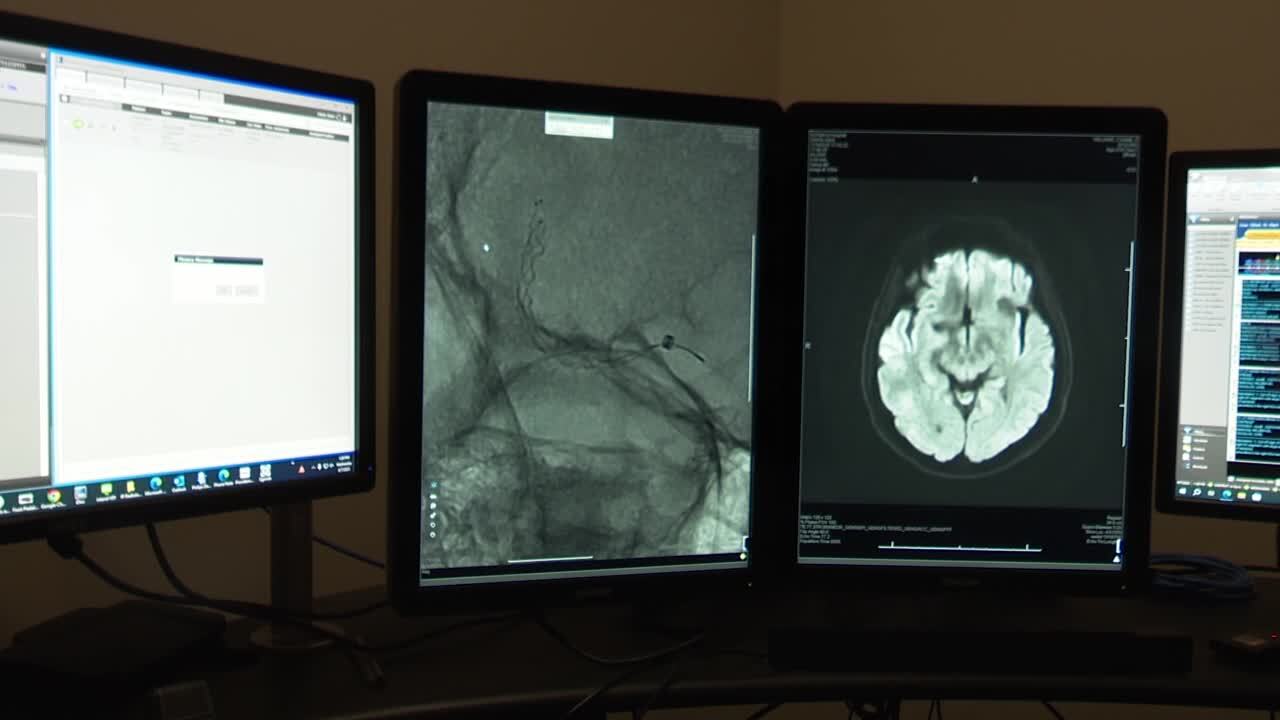MISSOULA — Strokes can be life-changing or deadly to those who experience one but at St. Patrick Hospital in Missoula, a protocol they use is saving people from massive strokes.
Connie Williams found her way to the Alpha Phi House at the University of Montana to be the sorority’s house mom after 40 years in journalism. She was a healthy person who liked to stay active. That changed one January day after she had returned from UM’s winter break.
"I’d been gone for two weeks and I decided to go on a long walk so I was walking up by the campus it was kind of cold and snowy and windy that day. The only thing I remember is thinking there’s this big snowy bike rack in the middle of the parking lot, what's it doing there?” Williams said.
Williams had what is called an ischemic stroke. She was found on the Kim Williams trail by a good Samaritan on a bike rack.

“The type of stroke that we’re talking about is when for some reason a clot goes into one of the arteries in the brain. Usually, it comes from the heart or from the corraded arteries and it blocks off an artery feeding a particular part of the brain so a brain without blood flow is going to die,” explained Vascular and Interventional Radiology Specialist Dr. Mark Elliot.
Luckily for Williams, St. Patrick Hospital doctors have a protocol they follow to open the artery so that part of the brain doesn’t die. Doctors can now surgically go in and remove the clot before the brain completely strokes, in a procedure that goes through the groin and follows the artery to the brain to remove the clot.
“We can kind of predict that by during a CT perfusion imaging when they come in and it can show what part of the brain has already died and what part of the brain is at risk and what part of the brain is going to die if we don’t get that artery open called Pundra. We can image that and predict that,” Williams said.
The clot was removed less than three hours after Connie was found on the Kim Williams Trail and Connie was in the hospital for only 24 hours.
“Our nurse Kelly who did a great job on the case came down super excited saying she normal, normal!” Dr. Elliot shared.

Williams says her family had a history of blood clots in brains.
“They got together and decided I have A-fib. Which my mother had and it's probably genetic, I probably inherited it in fact my mother died from that in a similar situation. She had a blood clot to her brain,” said Williams.
Getting to the hospital as soon as possible to reduce the damage of a massive stroke is one of the most important things you can do.
Dr. Elliot also shared an acronym for stroke symptoms, BE FAST, "B" is for balance, if the person has lost balance suddenly and "E" is for eyes, if the person is having visual changes. "F" is for face, if someone is experiencing a droopy face that might be a sign of a stroke. :A" is for arm, if the person can't move their arm normally, "S" is for speech, seeing if their speech had deteriorated and "T" is for time, you have time to call 9-1-1 and get that person help.
Dr. Elliot credits s bystander that found Connie on the trail. That person has never come forward.



